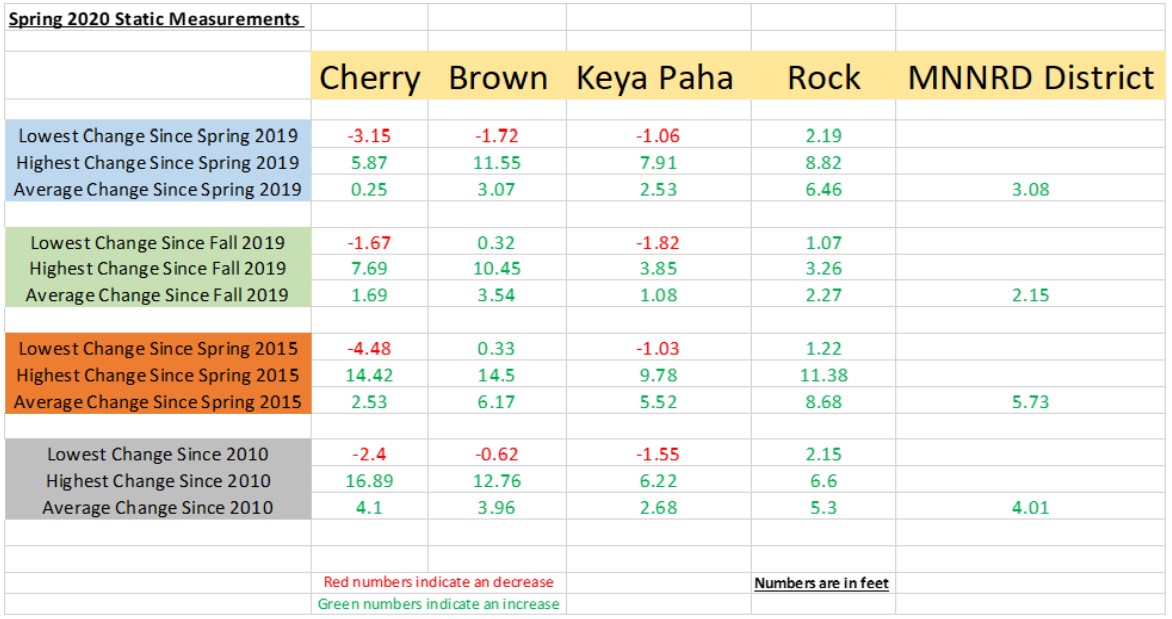Nitrates

A total of 335 wells were sampled in 2020 for nitrate contamination by MNNRD staff. These are a mix of Irrigation, Livestock, and Domestic wells across the 4 counties covered by the MNNRD. CDC/EPA guidance states that nitrate levels above 10 Parts per Million (PPM) are unsafe for humans to consume. High levels of nitrate in well water often result from improper well construction, well location, overuse of chemical fertilizers, or improper disposal of human and animal waste. Sources of nitrate that can enter your well include fertilizers, septic systems, animal feedlots, industrial waste, and food processing waste. Wells may be more vulnerable to such contamination after flooding, particularly if the wells are shallow, have been dug or bored, or have been submerged by floodwater for long periods of time. If you would like to have your well tested for nitrate or bacteria contamination stop into the office to get sample bottles and instructions.
Static Water Levels

The MNNRD samples irrigation and monitoring wells twice a year (Spring/Fall) for static water levels. Samples collected in each county for 2020 are as follows: Brown: 45, Cherry: 106, Keya Paha: 33, Rock: 10. The above graph includes data up until Spring of 2020. Fall static water level collection is underway. If you have any questions about levels in a more specific area, or would like more data, please call 402-376-3241 or stop into the office!
